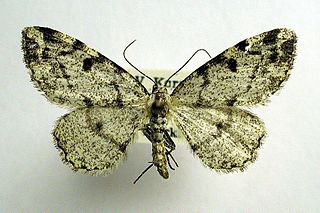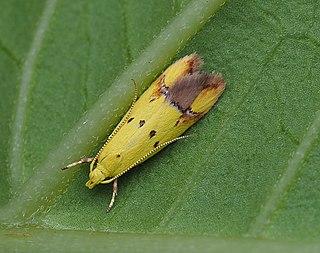Related Research Articles

The Australian wood duck, maned duck or maned goose is a dabbling duck found throughout much of Australia. It is the only living species in the genus Chenonetta. Traditionally placed in the subfamily Anatinae, it might belong to the subfamily Tadorninae (shelducks); the ringed teal may be its closest living relative.

The Orinoco goose is a member of the duck, goose and swan family Anatidae. It is in the shelduck subfamily Tadorninae, and placed in the genus Neochen. Three fossil relatives have been described from Pleistocene sites: Neochen pugil from Brazil, Neochen debilis from Argentina and Neochen barbadiana from Barbados.

Bronchocela jubata, commonly known as the maned forest lizard, is a species of agamid lizard found mainly in Indonesia on the islands of Singkep, Java, Bali, Sulawesi, Karakelang, Salibabu; Nias Island, Singkap Island, Borneo (Kalimantan) also in Thailand, Cambodia and Philippines. Although in the past it was thought the species may be found in India, either on the mainland or in the Nicobars, this is not the case according to herpetologist Das. It is also known by the common name of "bloodsucker", although this is a misnomer.

Cortaderia jubata is a species of grass known by several common names, including purple pampas grass and Andean pampas grass. It is similar to its more widespread relative, the pampas grass Cortaderia selloana, but it can get quite a bit taller, approaching seven meters in height at maximum.

Jubata ez-Zeit was a Syrian village situated in the far north of the Golan Heights. According to an Arab resident of a nearby town, it had a population of around 1,500 to 2,000 people prior to the forced population transfer of the town in 1968.

Alcis jubata, the dotted carpet, is a moth of the family Geometridae. The species was first described by Carl Peter Thunberg in 1788. It is found in central Europe, Scandinavia and northern Italy.
Gymnobathra ambigua is a species of moth in the family Oecophoridae. It is endemic to New Zealand. This species has been classified as critically endangered by the Department of Conservation.
Gymnobathra caliginosa is a moth of the family Oecophoridae. It was described by Philpott in 1927. It is found in New Zealand.
Gymnobathra cenchrias is a moth of the family Oecophoridae. It was described by Edward Meyrick in 1909. It is found in New Zealand.

Gymnobathra flavidella is a moth of the family Oecophoridae. It is endemic to New Zealand. The host plants for the larvae of this species include Brachyglottis repanda and Gahnia procera.
Gymnobathra hamatella is a moth of the family Oecophoridae. It was described by Francis Walker in 1864. It is found in New Zealand.
Gymnobathra hyetodes is a moth of the family Oecophoridae. It was described by Edward Meyrick in 1884. It is found in New Zealand.
Gymnobathra inaequata is a moth of the family Oecophoridae. It was described by Philpott in 1928. It is found in New Zealand.
Gymnobathra dinocosma is a moth of the family Oecophoridae. It was described by Edward Meyrick in 1884. It is found in New Zealand.
Gymnobathra levigata is a moth of the family Oecophoridae. It was described by Philpott in 1928. It is found in New Zealand.
Gymnobathra omphalota is a moth of the family Oecophoridae. It was described by Edward Meyrick in 1888. It is found in New Zealand.

Jubata al-Khashab is a town in southern Syria, administratively part of the Quneitra Governorate, in the portion of the province under the United Nations Disengagement Observer Force Zone. According to the Syria Central Bureau of Statistics, Jubata al-Khashab had a population of 3,493 in the 2004 census. Its inhabitants are predominantly Sunni Muslims, although the population has decreased drastically due to the exodus of residents fleeing the violence of the Syrian Civil War. On 13 September 2015, army units killed and injured a number of militants and destroyed many of their hideouts in direct strikes targeting their gatherings in the village.
Efferia jubata is a species of robber flies in the family Asilidae.

Gymnobathra is a genus of moths in the family Oecophoridae. It was first described by Edward Meyrick in 1883. All species are found in New Zealand.
References
| This article on a moth of the family Oecophoridae is a stub. You can help Wikipedia by expanding it. |